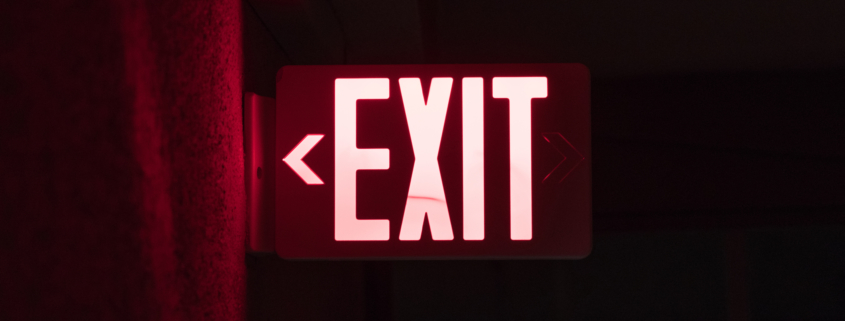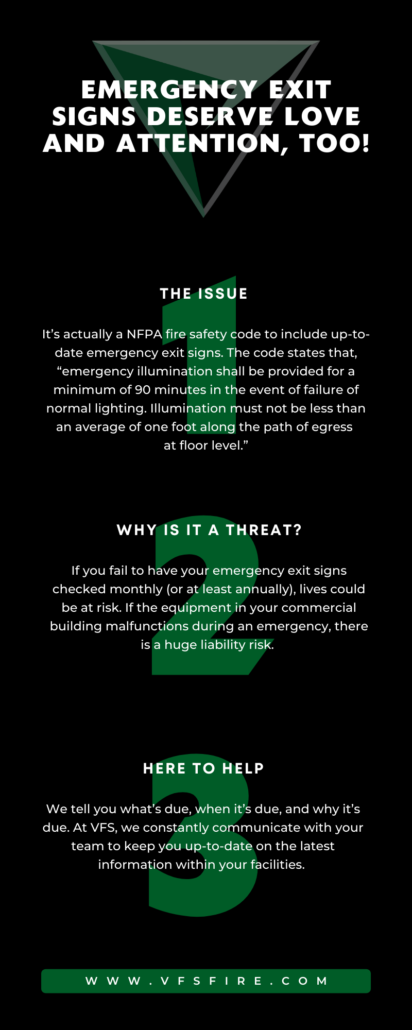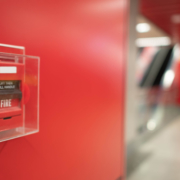Emergency Lights and Exit Signs Deserve Love and Attention, too!
Although they are sometimes overlooked, emergency lights and exit signs actually should fall into regular fire safety maintenance rhythms. It’s actually a National Fire Protection Association (NFPA) fire safety requirement to keep up-to-date emergency lights and exit signs. So, stay up-to-date and understand NFPA 101.
The code states that “emergency illumination shall be provided for a minimum of 90 minutes in the event of failure of normal lighting. The illumination must not be less than an average of one foot along the path of egress at floor level.”
Here’s what giving some love and attention to your overlooked exit signs and emergency lights might look like.
Testing
Since there are clear NFPA codes in place, there are guidelines to follow for annual inspections and emergency protection. Professionals are trained to know what to look for when it comes to emergency illumination.
There are a few steps you can take in your commercial building to ensure that your inspection goes as smoothly as possible. For one, make sure all emergency exit signs are easily accessible for the fire safety professional.
This means making sure that the area surrounding the emergency illumination is free of obstructions for full access. For monthly inspections, some emergency exit signs have test buttons that can easily be pressed with the help of a ladder. Again, each commercial and educational building will have a different setup and might require specific inspections and maintenance.
Red flags to look for while testing includes dull lighting, light bulbs that have blown out, and flickering. Overall, there is an emergency light combo that will work for your commercial building.
What Could Go Wrong?
If you fail to have your emergency lights and exit signs checked monthly (or at least annually), lives could be at risk. These systems are essential to guiding occupants out of a building in an emergency situation. If the equipment in your commercial building malfunctions during an actual emergency, there is a huge liability risk. Fire prevention is our specialty, so connect with us to learn more about annual inspections.
We tell you what’s due when it’s due, and why it’s due. At VFS, we constantly communicate with your team to keep you up-to-date on the latest information within your facilities.
Learn more on our updated website today!














